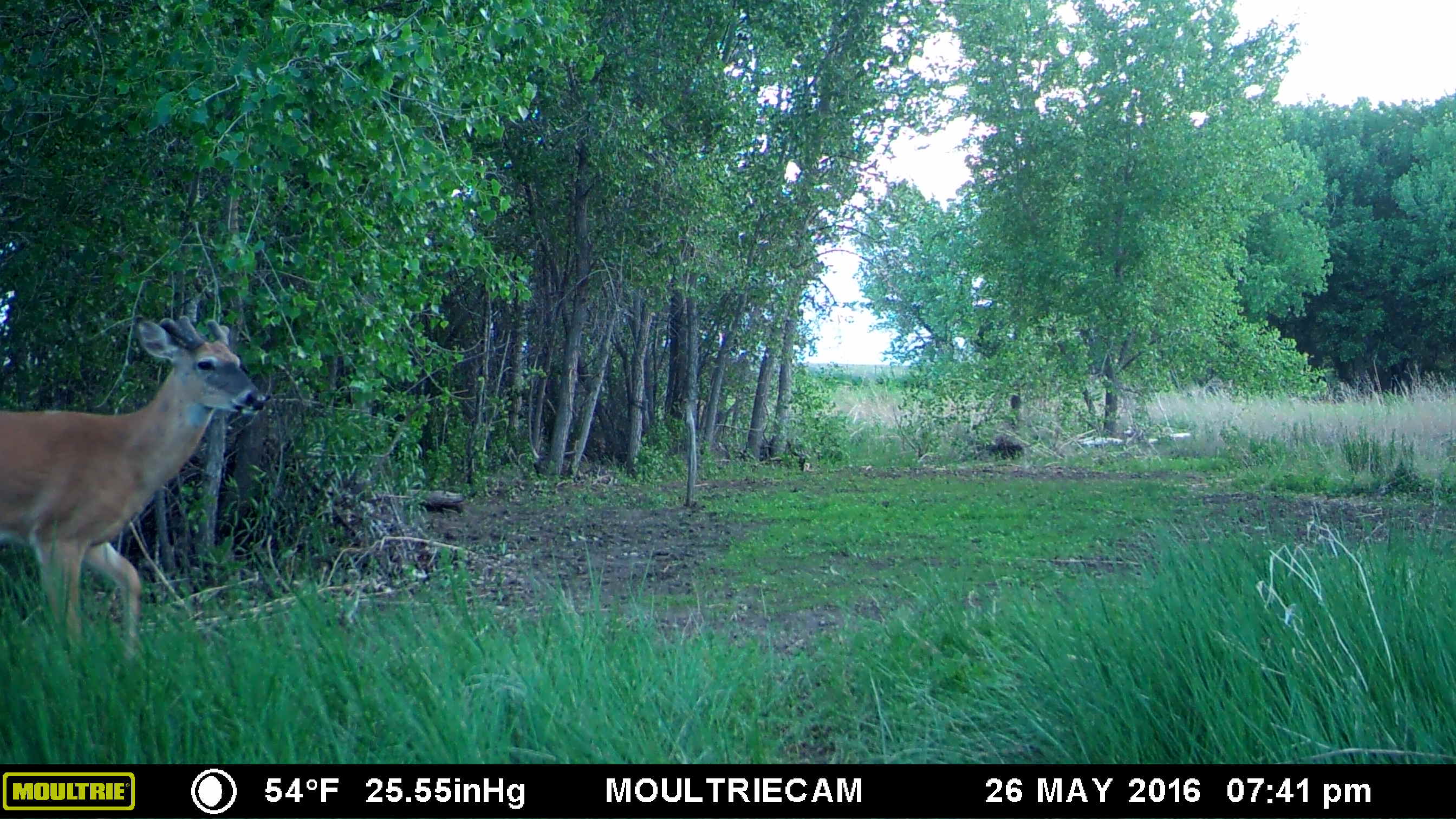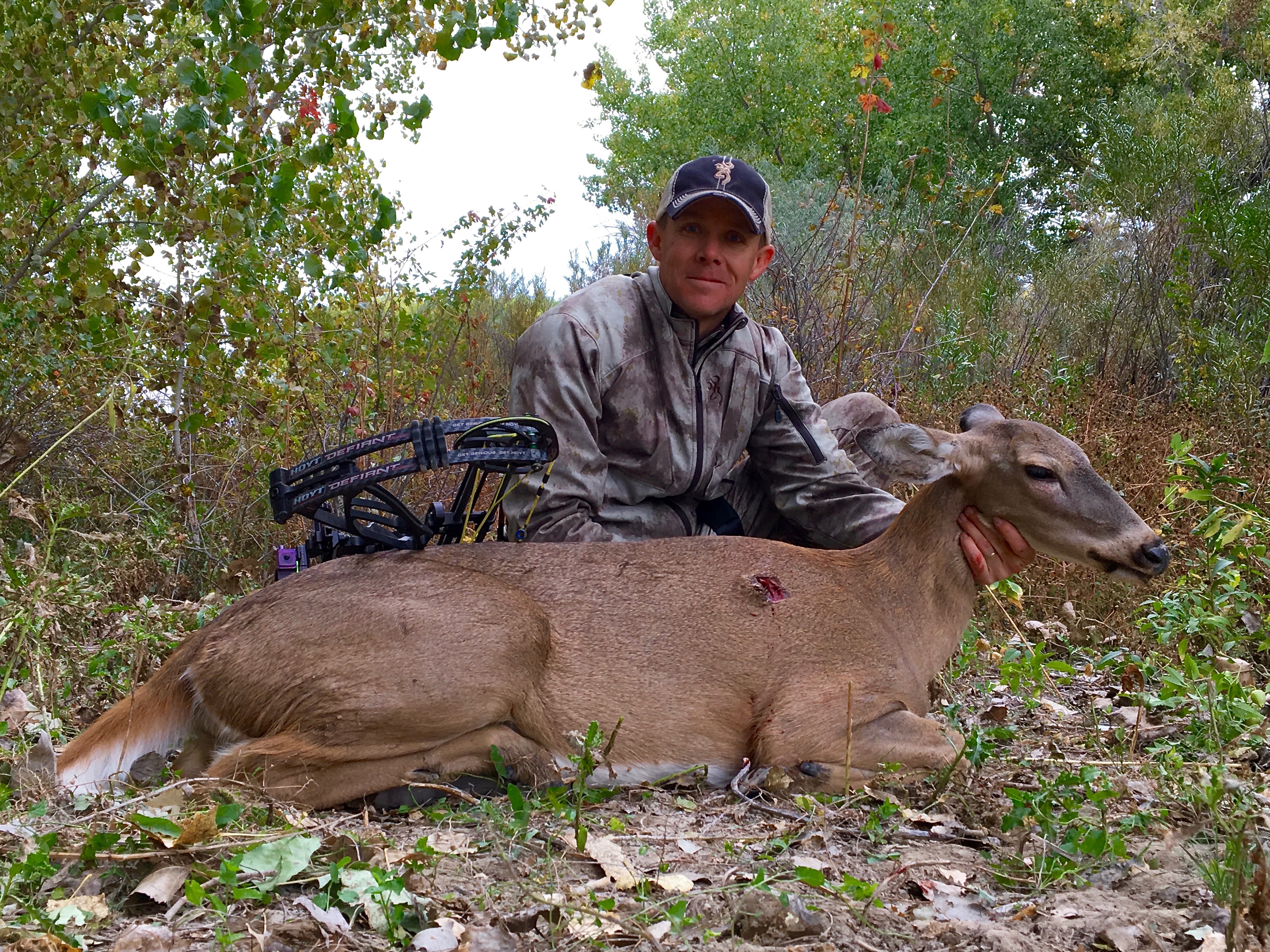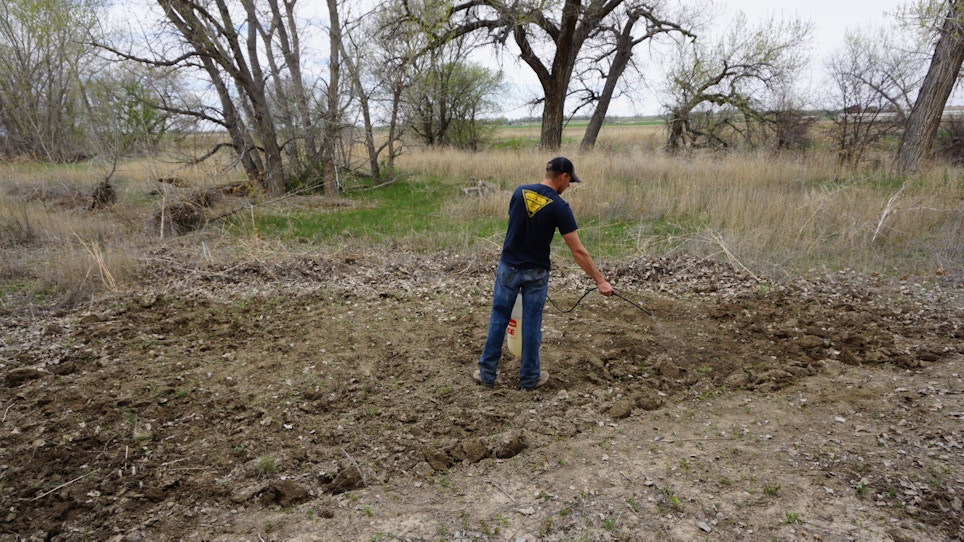In my neck of the woods, people get excited when soupy clouds crawl over the distant Rockies and sprawl across the open plains. Why? Aside from the breathtaking electricity show that typically accompanies these prairie squalls, we just don’t get much of the wet stuff in my little corner of Colorado. When it comes, it’s welcomed. Ranchers smile, farmers grin and people in town jump into their Chevys and take a country drive.
Naturally, when I told my good buddy (a local farmer) that I was going to plant a food plot for deer, I got a serious eye roll. “Bro, you don’t have enough water,” he said. “Sure, we’ll get some spring rains, but what are you going to do in July and August when it gets popcorn dry and temperatures stay in the triple digits?”
I didn’t have an answer. All I knew was I wanted to plant a food plot in the worst way.
Not having access to farm equipment or vast acres of whitetail pay dirt actually simplified the process. My plan was to locate a hidden spot in the timber along a creek (I knew the ground in the area would be semi-moist deep down), find the perfect mixture of morning sun and midday shade and plant a kill plot.
The Right Blend
Before I started hauling shovels, hoes, rakes and the like — heck, before I even located the spot where I wanted to plant my little plot — I started researching seeds.
A particular blend from the fine folks at Heartland Wildlife caught my eye. Dubbed Forested Trail, the blend was designed to be a shade-tolerant mix that needed a little bit of sun. Like all clover, the selected New Zealand-type ladino and grazing-style subterranean clover mix would send down deep roots — roots that would easily tap deep-under-the-soil moisture.
My plan to provide extra shade was to sprinkle in Evolved’s Throw & Gro X-Treme Oats. My hope was that the deer would focus their spring and early-summer feeding on the oats, giving my tiny clover time to grow. In addition, the oats would provide the clover with a bit more shade and cover.
Just Do It
I didn’t do a pH test. Easy ... don’t tar and feather me just yet. This was just an experiment. If it worked, great. If it didn’t, I was out a few bucks and a little manual labor. The spot was perfect. Located 40 yards from a hard-flowing creek lined with overhanging cottonwoods, the kill plot site would be in a natural funnel and get plenty of shade and sun.
My first step was to clear the spot of any and all surface debris: old weeds, branches, logs and the like. Next, I soaked a 30-yard-long by 15-yard-wide area with Roundup Weed & Grass Killer Concentrate Plus. I wasn’t in a hurry. I wanted to do this right.
Three days later I returned to the area with some quality help (my son and a few of his school friends). We spent three hours prepping the ground. Our work included using hoes, shovels and rakes to till the earth and clear it of any now-dying weeds.
Next, I poured my Forested Blend into a handheld seed spreader and let it fly. The boys walked lightly behind me to drive the seed into the soft soil. After accomplishing this task, I filled my spreader with Throw & Gro. We then used scoop shovels and a few bags of peat moss to cover the Throw & Gro and provide the soil with a few extra nutrients. That was it! My kill plot was in and established using nothing more than lawn and garden tools.
Let It Rain
April is a great time to plant in my neck of the woods and a great time to get a perennial food plot established before fall. Yes, the oats are annuals, but their only purpose was to shade my clover and keep deer off it in its early stages. Plus, we get most of our annual rain during the month of April.
I planned the planting around the rain. Though they’re usually wrong more than right, the meteorologists actually got it right. Within hours of seed going in the ground, the rain came. It didn’t pour, but 3⁄10ths of an inch is more than enough to spark germination. Three days’ growth was fostered by another 5⁄10ths, followed the next day by a slow, steady drizzle.
I was scared to walk down to the plot. I guess in the back of my mind I feared it wouldn’t work. After all, nobody plants food plots for deer in my neck of the woods. I was overjoyed when I saw the once bare earth had turned green. It was everywhere. The grass-like oats were a ½-inch tall, and I could see clover breaking through.

When the rains come and your plot starts to grow, it doesn't take long for the deer to arrive. This buck made 47 different plot appearances between May and Septemeber.
Do Your Part
Over the course of the summer, I had to fight the weeds. Because clover is a broadleaf, most herbicides were out of the question, which meant it was a hands-and-knees sort of deal. I didn’t care. My plot was lush and my Moultrie and Stealth Cam trail cameras were showing plenty of whitetail activity.
I never mowed the clover, I didn’t have to. Due to the lack of water and torrid heat, the clover only grew to be ankle high, which was actually perfect. The deer pounded the oats, and eventually the unquenchable heat waves of summer killed it off. Twice — both times on the brink of a healthy summer storm — I raked in and replanted oats. It worked like a charm. The oats came back and shaded the clover.
By the end of August, I had an established stand of clover. I was thrilled with the results. Though I wasn’t going to hunt a buck over the plot, I had a blast establishing this perennial plot and hoped to harvest a doe over it.
Reap The Rewards
We had zero moisture during the month of September, and it was hot. My clover looked absolutely awesome — its deep roots tapping the underground moisture provided by the nearby creek.
I had an ear-to-ear smile when I climbed into my stand that first October morning. The wind was perfect, 5 to 7 mph from the southwest, and it wasn’t long before I had some action. A young doe and her fawn ran to the plot and started munching. Minutes later a small buck and a big, mature doe wandered in. I anchored the mature doe.
As I sat over her, a feeling of complete and total satisfaction came over me. I stepped outside of the “area whitetail norm,” and it paid off in spades. As I pen this piece, the rut is raging and I’ve had a pair of 140-inch bucks in my plot checking for does regularly. I think that’s a case for a kill plot, and you can follow suit by following the steps in this column no matter where you live.

A little time and sweat equity is all it takes to create a small food plot, and it simply doesn't get any better than reaping the rewards of your labor.







